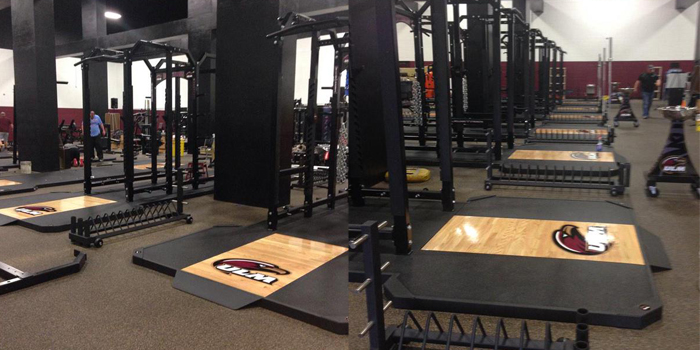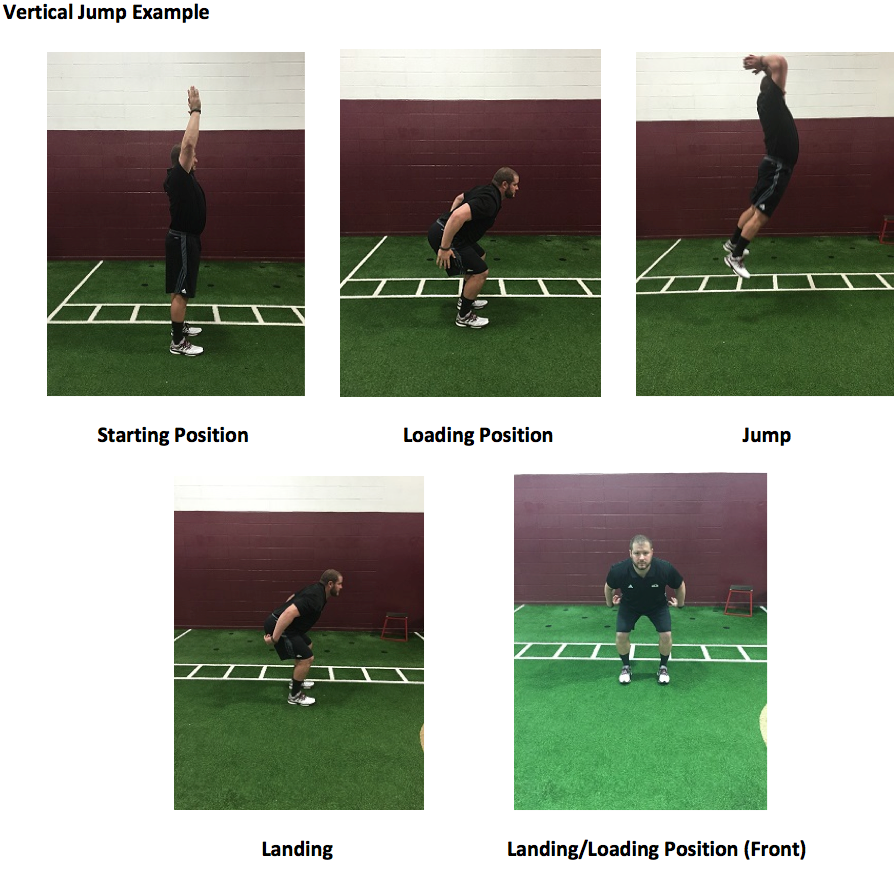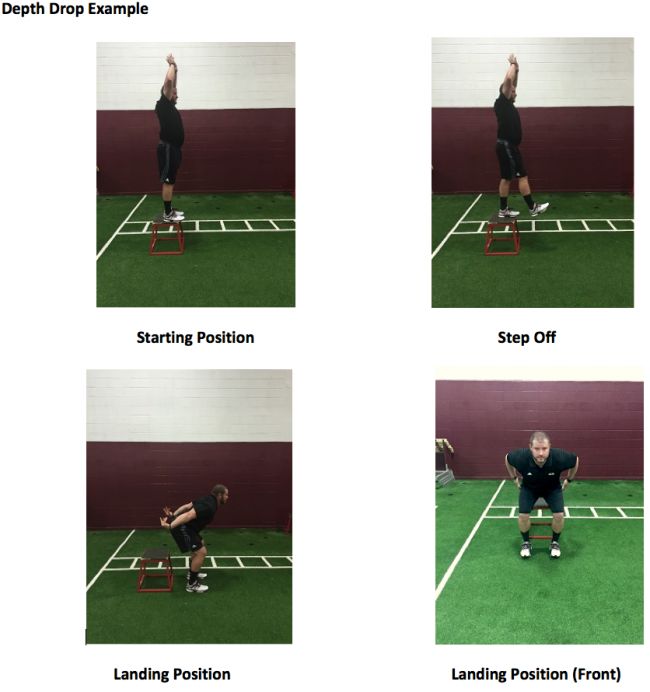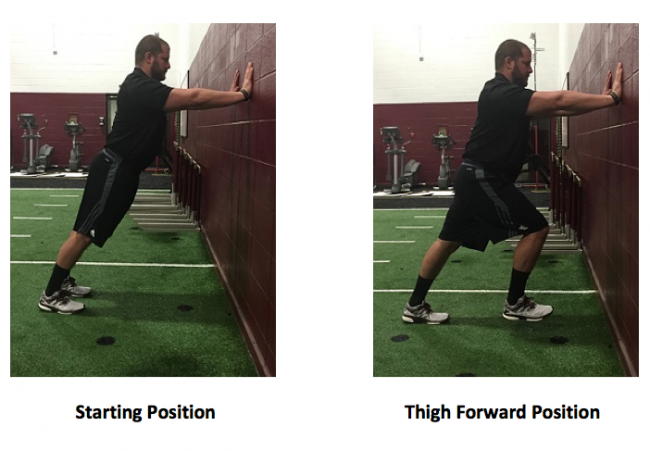
The goal of this series of articles is to address what I believe to be the most misunderstood concept of training in our field today: speed development. Throughout this series I will address speed dynamics, pure acceleration, and max velocity. The approach I will use is heavily influenced by the speed development of football players. However, the same techniques discussed here can be utilized with all team field sports.
It is valuable to view movements and exercises as “tools in the tool box.” That being said, we must ensure that we use the right tool for the right job. The act of sprinting is just one of many tools that can be used for speed development. In conjunction with the act of sprinting, we must develop the qualities associated with speed. We must take into account the development of explosive strength, starting strength, and reactive strength. These attributes can all be trained and developed through what are called speed dynamics. The tools that can be used to help develop these qualities are med ball throws, jumps, wall drills, and sprints.
Characteristics Associated with Speed Development (Verkhoshanky)
- Starting Strength — The measurement of how fast and forceful the athletic motion is at the start (concentric movement).
- Explosive Strength — The greatest amount of force developed in a very brief time period.
- Reactive Strength — Explosive strength exhibited in the stretch shortening cycle, actions that can be improved through reactive-explosive training.
- Speed Strength — How well an athlete applies force with speed. A combination of starting strength and explosive strength, speed is the key here.
- Strength Speed — Rapid movements against heavy loads. Strength is key over speed with this type of training.
The Foundation to Faster Athletes
The goal of this article is to introduce to you tools that can be used during speed development training sessions
Med ball throws, jumps, wall drills, and sprints are all great tools for speed development and should be performed in that order. The reason for this is we are working from lower neurological output activities to highest, which is sprinting.
The use of med ball throw’s and jumps can be used to develop explosive and reactive strength. Explosive strength is associated with acceleration while reactive strength is associated with max velocity.
The Warm Up
Perhaps one of the most over looked aspects of our training is the warm up. The warm up is a great opportunity to add in extra general physical preparedness (GPP) to further the development of aerobic capacity. Aerobic capacity and aerobic power plays a huge role in allowing the athlete to withstand the high intensities of speed development as well as the game of football. Well-developed aerobic capacity and power allows the athlete to recover energy substrates much quicker, in turn allowing the athlete to repeatedly train at higher intensities. Due to time constraints faced by collegiate strength and conditioning coaches, it is recommend to warm up no longer than 20 minutes. Once the athletes have learned the warm up, I would encourage trying to perform the it as quickly as possible to keep the heart rate up and build aerobic capacity. The goal should be to get through the warm as quickly and efficiently as possible.
Med Ball Throws
Following the warm-up, we will go right into med ball throws. As stated above, my first phase of speed development will consist of acceleration qualities. In this phase, you want to work explosive strength with the med balls. We can use med balls from 10 to 16 pounds. It will all depend on the training age of our athlete and how much exposure he has had to explosive strength. We want to incorporate both vertical and horizontal throws. I usually program in four throw variations.
Med ball throws are a great tool for developing explosive strength and starting strength. We will incorporate a three-second pause at the end of each loading phase or eccentric phase before finishing the movement. Reactive strength will be trained using a counter movement that involves a quick stretch of the muscle before continuing the throw. During reactive throws we want to spend as little time on the ground creating force during the counter movement.
Jumps
When programming in jumps we want to start very basic with our athletes and progress them very slowly. One of the first things our freshman athletes should be learning to do is land in a good jump position with butt back, chest up, hands by the hip, and flat on the feet. The landing portion of the jump works the isometric or amortization phase of the jump helping to teach the athlete to stabilize during the landing. Having a prepatory phase that introduces jump mechanics allows the athlete to learn how to stabilize and absorb force during jumping. This helps to carry over to the act of sprinting as athletes displace 4-6 times their body weight during sprinting. This can be accomplished with depth drops. From there we can progress to vertical jumps from the ground with a stick and hold, still working on good stabilization during the amortization phase of the jump.
Plyometric and Shock Training
Before we can begin with plyometric training and the shock method training we must make sure our athletes have a good understanding of jump mechanics as discussed above. Due to the forces placed on the body during plyometric and shock training it is imperative athletes can handle the load of their own body weight during vertical jumps and depth drops with great technique. Great technique incorporates the athlete’s ability to stick the landing with their chest up, butt back, feet flat, and hands by their hips. The biggest thing we are looking for is the collapsing of the knees inward which indicates a lack of strength to perform plyometric and shock method training. If the athlete displays this on landing or take off, coaches will need to continue to work depth drops from a lower box and progress as the athlete shows understanding of correct landing mechanics.
Plyometric training is synonymous with explosive and reactive training, as a way of increasing ground contact force and decreasing ground contact time. Plyometric training is a great way of training the stretch shortening cycle action of the muscles. The Golgi tendon organ is a proprioceptivesensory receptor that is at the origin and insertion of skeletal muscle fibers into the tendons of skeletal muscle. It provides the sensory component of the Golgi tendon reflex. In simplistic terms the Golgi tendon assists in regulating muscle contraction force. It inhibits higher rate force development within the muscle that the body deems dangerous. However, just as we can train a muscle to grow we can also use certain training protocols such as plyometric training and the shock method training to bypass the inhibitory effect of the Golgi tendon organ.
I like to use plyometric training in conjunction with Verkhoshanky’s Shock Method (Shock Method). According to Verkhoshansky, the essential method of the Shock regime is sharp, compulsory muscular tension, initiated by the body’s impact (collision) with an external object (the ground) (Verkhoshansky, 2012).
Plyometric training involves a repeated stretching and contracting of muscles and consists more of bounding, sprinting, and jumps from the ground (speed strength). The shock method however, involves the use of depth drops to create a more sharp impact of external forces such as the ground (strength speed due to overcoming external forces) (Verkhoshansky). Shock method training is a more aggressive way of training the stretch shortening cycle as it involves the use of depth drops creating a more violent contraction of the muscles. We must teach the body to bypass the role of the Golgi tendon organ to be able to create more force. The Golgi tendon organ will always play a role in inhibiting muscular contraction force but we can teach the body to contract faster inhibiting the role of the Golgi tendon organ.
The idea behind plyometric or shock training is to develop explosive and reactive strength using a continuum of progressions that start with very basic jump mechanics. We can progress as the athlete shows an understanding of the movements and can execute correctly. We can progress from vertical jumps to continuous vertical jumps (continuous for max velocity); from broad jumps to triple broad jumps (acceleration); depth drops to depth drops with a vertical jump or even depth drops to jumps over hurdles (max velocity).
Wall Drills
Wall drills have always been a great way of teaching pure acceleration mechanics. Most people associate the term knee drive with wall drills. Pure acceleration lasts the first 3-5 yards during sprinting. Wall drills, when done correctly are a great way of enforcing and teaching acceleration technique and can be done after your jumps during each speed training session. While developing explosive and reactive strength proper technique plays an important part in helping to increase speed. During wall drills, we want the athlete to concentrate on driving the thigh forward with great velocity requiring a forceful activation of the hip flexors while driving the opposite thigh towards the ground with great negative acceleration. Keep the heel under the thigh and the toe slightly in front of the knee while keeping the foot low to the ground. As we can see by the picture below, it is not so much a knee drive as it is a fast acceleration of the thigh forward.
Recap
Wall drills are great for training pure acceleration mechanics.
- Wall Drills allow the athlete to work body position, correct shin angle, posture, violent thigh action, and violent negative acceleration of the leg.
- Develop correct motor program
- Changing mechanics can take up to 500 hours.
Closing Thoughts
It is important to use these tools with a well-developed yearly resistance training program. Athletes must possess well developed max effort strength to be able to withstand the forces placed on the body through jumping and sprinting (4-6 times the athlete’s body weight in force). Well-developed max effort strength will allow our athletes progress through the prepatory phase of jumps progressing to plyometric and shock method training. It is important to start our entire incoming freshman class with general qualities of max effort strength, jumping and landing mechanics, hypertrophy training, and aerobic capacity development before starting with extensive speed training using the above tools. This will help them to handle the intensities of speed training as well as withstand the force production generated from speed (4-6 times the athlete’s body weight).
Special thanks to Loren Seagrave, for providing me the opportunity to learn from him while working at IMG Performance Institute. Frank Wintrich, who pushes me to this day to seek knowledge, lead by example, and improve as a coach on a daily basis. As well as Kevin Heiberger, who pushes me in my pursuit of the never ending knowledge is this field.
References
Verkhoshansky, N. (2012). Retrieved March 5, 2015, from http://www.verkhoshansky.com/Portals/0/Presentations/Shock%20Method%20Plyometrics.pdf
Ben Jacobs started out as a student strength and conditioning coach at East Carolina University. From there he spent two years at IMG Performance Institute learning from Loren Seagrave and Kevin Heiberger during the NFL combine and other sports. He spent two years as an Assistant Strength and Conditioning Coach for football at the University of North Texas under Frank Wintrich. Ben is currently the Assistant Director of Strength and Conditioning at the University of Louisiana Monroe working with football and golf.













1 Comment